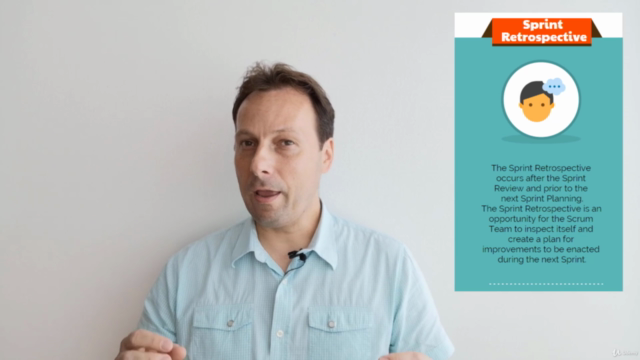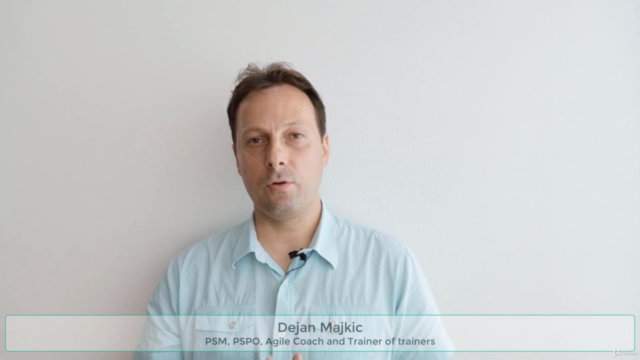The Ultimate Scrum Events Course & Practical Scrum Examples

Why take this course?
🎉 Welcome to the world of Scrum! 🎉
Scrum is a framework that helps teams address complex adaptive problems while productively and creatively delivering products of the highest possible value. It is a key part of Agile project management and is widely used in software development but also applicable in many other fields.
Here's a brief overview of Scrum and its events:
Scrum Keywords and Phrases:
- Scrum: A framework that helps teams work together to address complex problems.
- Scrum in Practice: The actual application of the principles and processes of Scrum.
- Scrum Events in Practice: The five events defined in Scrum: Sprint, Sprint Planning, Daily Scrum, Sprint Review, and Sprint Retrospective.
- How Scrum Events Work: Each event has a specific purpose and is timeboxed to create regularity and minimize the lead time for the most important features to be released.
- Scrum Master: A role that ensures the team follows the Scrum process and supports them in their work.
- Scrum Alliance: An organization that provides certification for Scrum practitioners, such as the Certified ScrumMaster (CSM).
- Agile Scrum: The use of Scrum within the Agile methodology to deliver products iteratively and incrementally.
- Scrum Master Salary: Variable depending on location, experience, and industry.
- Certified ScrumMaster: A certification that validates a practitioner's understanding of Scrum practices and principles.
- Scrum Project Management: Managing projects using the Scrum framework, focusing on delivering value in short cycles called Sprints.
- Scrum Agile: Scrum is a form of Agile but not all Agile methods are Scrum. They share similar values and principles.
- Scrum vs Agile: Scrum is an implementation of Agile, with a set of rules and roles to follow, while Agile is a broader philosophy or set of values.
- Kanban vs Scrum: Two different frameworks for project management within the Agile umbrella; Kanban focuses on continuous delivery without fixed iterations, while Scrum has defined Sprint cycles.
- Scrum Board: A visual tool that represents work to be done and progress in a Scrum project.
- Scrum Guide: The definitive reference for how Scrum is supposed to be done, written by the founders of Scrum.
- Scrum Meeting: Refers to any of the events within a Scrum framework (Sprint Planning, Daily Stand-up, Sprint Review, and Sprint Retrospective).
- Scrum Definition: A set of roles, events, artifacts, and rules that guide the team in completing complex work incrementally and iteratively.
- Scrum Master Resume: A resume for someone who specializes in the Scrum Master role, highlighting their experience with Scrum practices.
- Scrum Team: The group of people working together to deliver a potentially releasable increment of the product at the end of each Sprint. It includes the Product Owner, the Scrum Master, and the Development Team.
- Scrum of Scrums: A regular meeting (often daily) between representatives from various teams to discuss progress, obstacles, dependencies, and coordination for effective information exchange.
Now that you're familiar with these terms, let's dive deeper into some of the key concepts and practices within Scrum:
Scrum Events:
- Sprint: A time-boxed period (usually 2-4 weeks) during which a "Done", usable, and potentially releasable product Increment is created.
- Sprint Planning: A meeting to define the Sprint Goal and do the initial and detailed breakdown of tasks (Product Backlog Items) into the Sprint Backlog.
- Daily Scrum: A short, daily meeting for the Development Team to assess progress and plan the next 24 hours of work.
- Sprint Review: An event at the end of the Sprint to inspect the Increment and adapt the Product Backlog if needed.
- Sprint Retrospective: A meeting after the Sprint Review to reflect on the past Sprint and plan ways to improve.
Scrum Artifacts:
- Product Backlog: An ordered list of everything that is known to be needed in the product, maintained by the Product Owner.
- Sprint Backlog: The set of Product Backlog items selected for the Sprint, plus a plan for delivering the product Increment and realizing the Sprint Goal.
- Increment: An increment is a sum of all the Product Backlog items completed during a Sprint and all previous Sprints, which must be in a usable condition.
Scrum Values:
- Commitment: Delivering on promises made to each other.
- Courage: Doing what needs to be done when it needs to be done.
- Focus: Concentrating on the highest priority work at the moment.
- Openness: Being professionally vulnerable with each other in the interest of excellence.
- Respect: Valuing and respecting the individuals, their contributions, and their dedication.
Scrum Framework:
- Roles: Product Owner, Scrum Master, and Development Team.
- Events: Sprint, Sprint Planning, Daily Scrum, Sprint Review, and Sprint Retrospective.
- Artifacts: Product Backlog, Sprint Backlog, and Increment.
- Rules: There are specific rules that govern how the events and artifacts within Scrum are enacted.
Implementing Scrum:
To implement Scrum, a team should:
- Understand the Scrum framework and its principles.
- Define the roles and responsibilities within the team.
- Establish the Product Backlog and prioritize items.
- Conduct Sprints and hold regular events (Planning, Daily Scrum, Review, Retrospective).
- Continuously improve the process based on feedback and experience.
Remember, Scrum is not a tool to fix broken processes; it's a framework that helps teams work together effectively to address complex problems and deliver products in a way that maximizes the value of work not done. It requires commitment, trust, and a willingness to embrace change and continuous improvement.
If you're interested in becoming a Certified ScrumMaster (CSM), you might want to look into resources provided by organizations like Scrum Alliance or Scrum.org, where you can find study guides, courses, and information on how to get certified.
Good luck on your Scrum journey, and feel free to reach out with any specific questions as you learn more about this exciting and effective framework for project management! 🚀
Course Gallery




Loading charts...